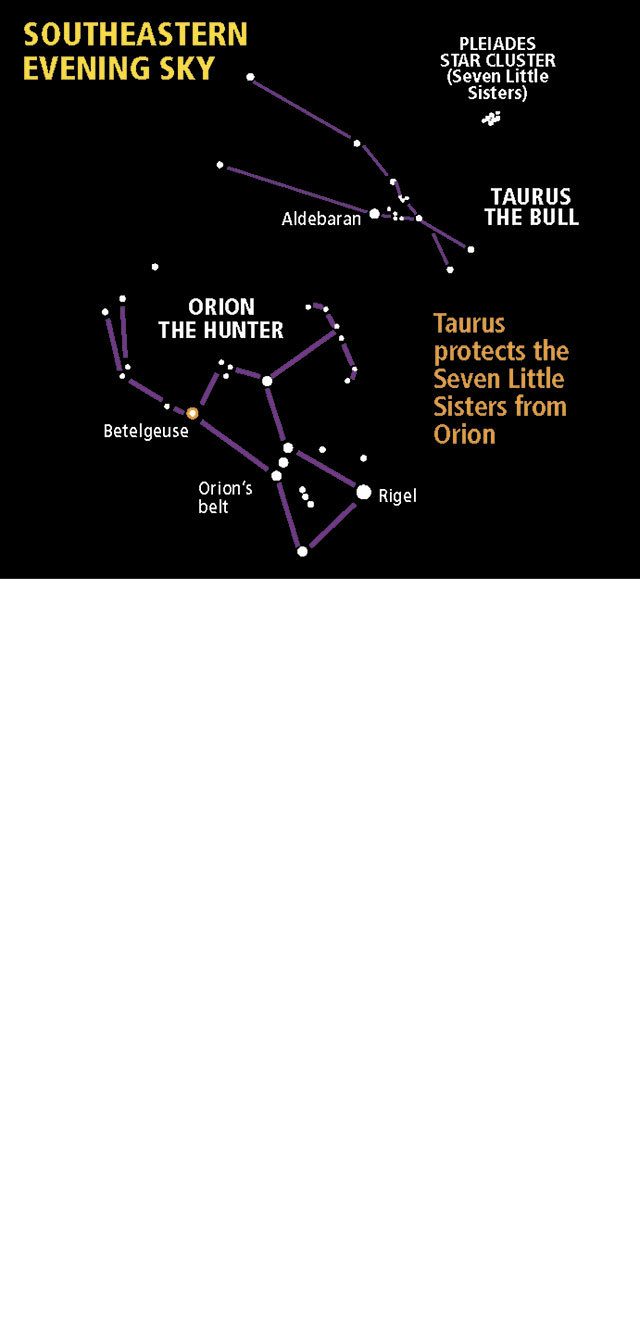I have a passion for the great winter constellations that are now putting on their annual winter show in the southeastern sky. Longtime readers of my column know my nickname for these constellations is “Orion and his Gang.”
Even if you’re not all that much into stargazing, chances are you know the constellation Orion the Hunter. It’s one of those constellations that actually sort of looks like what it’s supposed to be. The hour glass-bowtie shaped constellation outlines the torso of the mighty hunter. Its best feature is the three bright stars in a row that make up Orion’s belt. The brightest star, Rigel, marks the left knee of the hunter, and the next brightest star, Betelgeuse, is an Arabic name that roughly translates in English to “armpit of the great one.”
Not far away and straight above Orion in the high southeast sky is that wonderful cluster of stars you can easily see. Say hello to the Pleiades. Most people can easily see about 6 to 7 stars with the naked eye. It kind of looks like a tiny Little Dipper. I know you’ve seen it before.
Astronomically, the Pleiades is a cluster of a couple hundred very young stars, all born together gravitationally out of a gigantic cloud of hydrogen. They shine on us at a distance of over 400 light-years away, with just one light year weighing in at over 6 trillion miles.
Kiowa Native American lore saw the seven stars of the Pleiades as seven young maidens who mischievously wandered away from their home campsite one night to dance and generally frolic under the stars. They drifted farther and farther away from the home base and suddenly found themselves surrounded by grizzly bears. In vain they ran as fast as they could away from the hungry bruins.
Everyone knows you can’t outrun grizzly bears, and the maidens knew it, too. They desperately prayed to the rock they were standing on to save them from being grizzly food. The rock they were standing on responded and suddenly rose over 5,000 feet, leaving the hungry bears on the ground. Shortly after that, the maidens were transformed into seven closely knit stars. The tower that saved the maidens is now known as Devil’s Tower in Wyoming, and every winter the Pleiades brightly shine above it.
I love these constellation stories as much as I love the science of the night sky.
Celestial hugging this week: This coming Wednesday and Thursday the waning crescent moon passes by the planets Saturn and Mercury in the low southeastern sky in the morning twilight. Saturn will be the brightest star-like object in that part of the sky. Mercury is 102 million miles away, but Saturn is about a billion miles away. Despite that distance you should be able to resolve Saturn’s ring system with even a small telescope.
Talk to us
> Give us your news tips.
> Send us a letter to the editor.
> More Herald contact information.

























